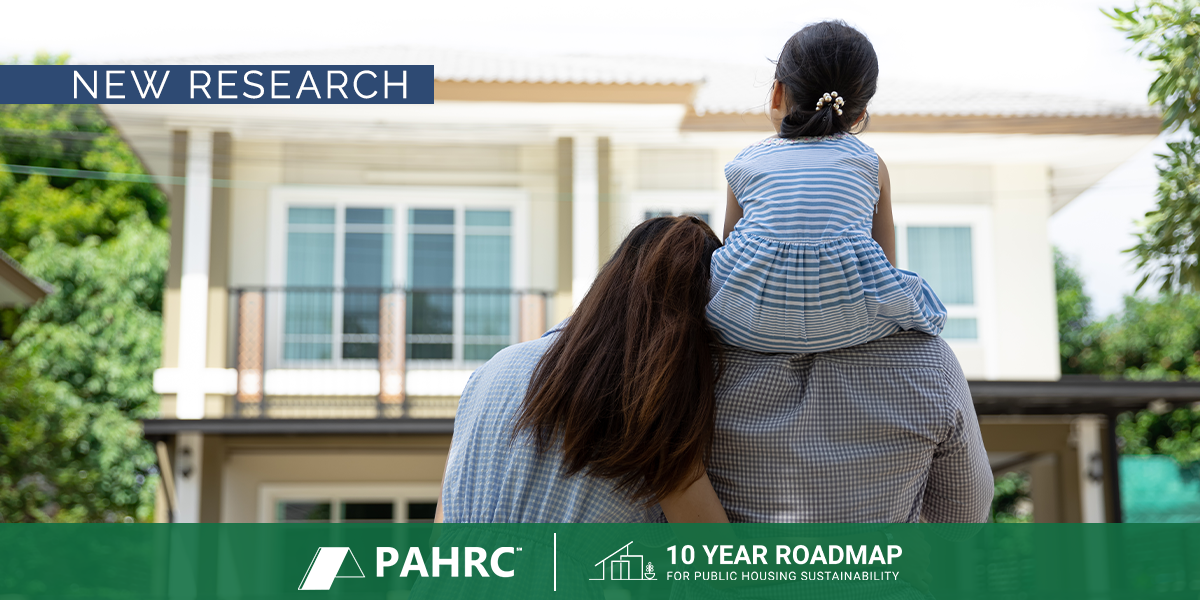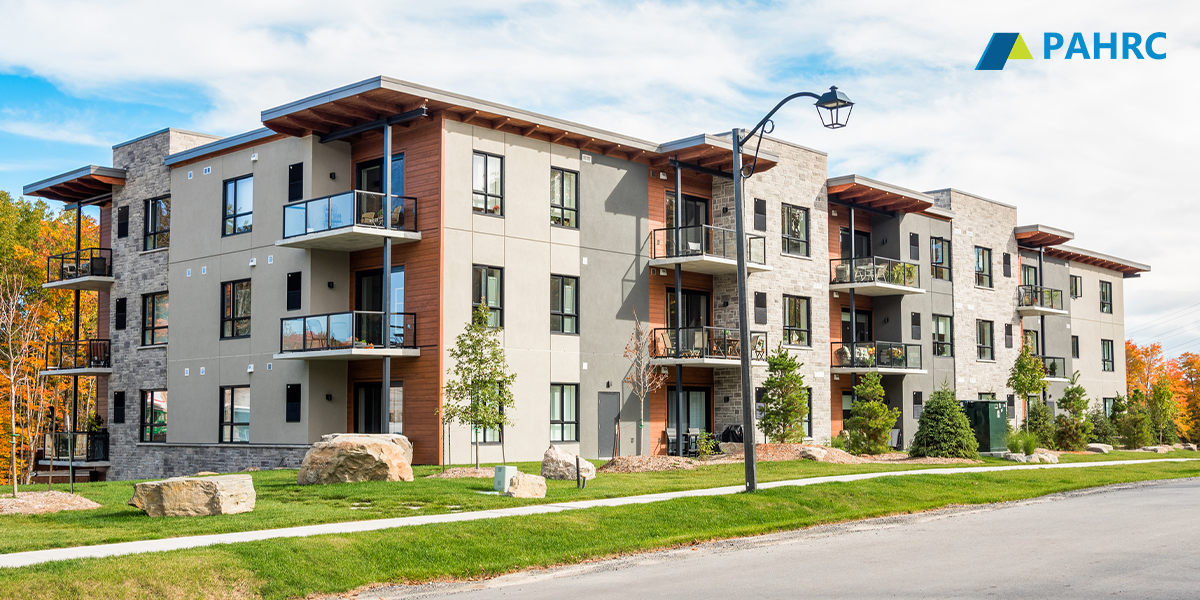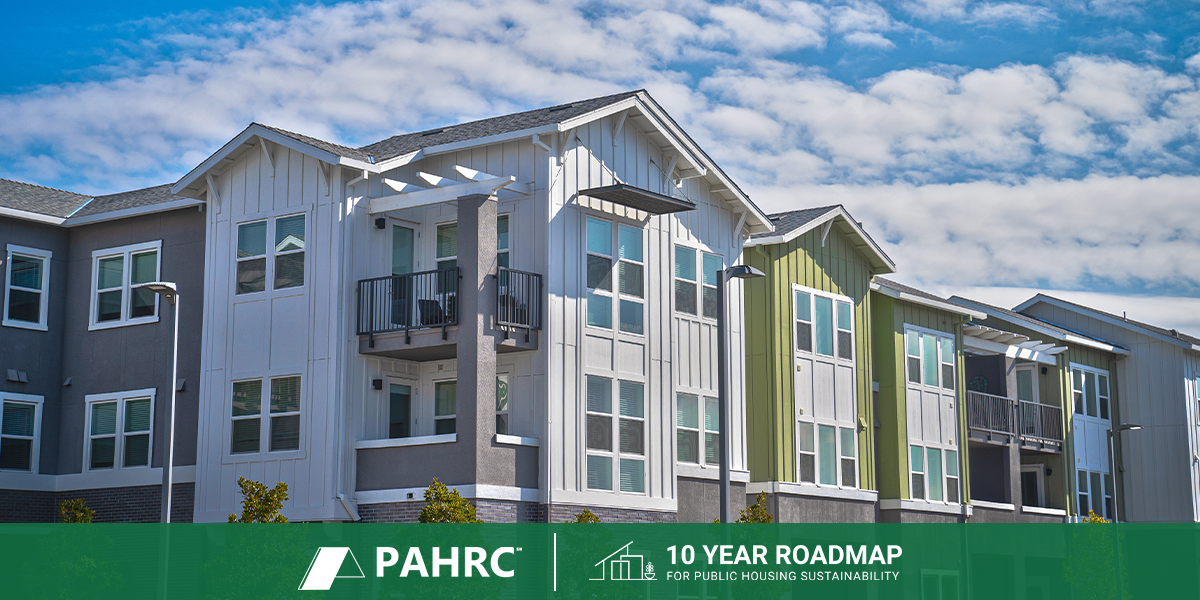Over the past year, the Public and Affordable Housing Research Corporation (PAHRC)—HAI Group’s research division—partnered with leaders from housing, research, advocacy, and consulting organizations to produce research to support the development of a 10 Year Roadmap for Public Housing Sustainability.
The roadmap's mission is to develop a public housing preservation plan that establishes a sustainable, affordable, and service-enriched housing platform for residents to achieve their life goals. To inform the roadmap, PAHRC published a Technical Report that estimated the cost of preserving the nation’s public housing stock.
Continue reading to learn why the 10 Year Roadmap was developed and what we’ve learned from this collaboration.
Why the 10 Year Roadmap for Public Housing Sustainability was developed
In 2010, researchers estimated public housing had $26 billion unmet capital needs. These costs continue to rise with each passing year due to inflation and the continued aging of building systems.
Many industry leaders believed that the costs projected in the latest public housing capital needs assessment published 15 years ago have risen even higher due to skyrocketing construction costs and long-term funding cuts, pressuring public housing authorities (PHAs) to defer maintenance. Additionally, this capital needs assessment did not include the complete costs PHAs incur to preserve their property, including tenant relocation, loan payoff, and acquisition costs.
Industry leaders wanted the 10 Year Roadmap policy platform to be evidence-based. This meant answering questions like:
- How much would preserving the nation’s public housing stock cost today?
- What resources are currently accessible to PHAs to meet this need today?
- How does public housing impact resident health, education, and economic outcomes?
The Council of Large Public Housing Authorities (CLPHA) organized a coalition of stakeholders to answer these questions and inform the development of a policy platform that ensures public housing remains sustainable.
Today, CLPHA published an Interim Report highlighting these partnerships' progress over the past year.
What we’ve learned from the 10 Year Roadmap so far
Public housing preservation costs
PAHRC partnered with the 10 Year Roadmap for Public Housing Sustainability to estimate the cost of preserving public housing in 2025. This assessment was based on hard construction costs incurred by public housing properties that recently underwent Rental Assistance Demonstration (RAD) conversions, adjusted to include soft costs, loan payoff, and acquisition expenses.
This research reveals several critical findings about public housing preservation needs:
Total preservation costs: The baseline cost to preserve the nation’s public housing portfolio in 2025 is estimated at $188,090 per unit, or $169.1 billion nationwide.
Annual accrual costs if preservation is delayed: Preserving the nation’s public housing stock will take many years as PHAs need to secure funding, build capacity, plan, and implement redevelopment efforts. Considering existing needs and future annual accrual costs, a plan to preserve the nation’s public housing stock over 10 years could cost approximately $183.7 billion in 2025. This ambitious plan assumes that nearly 90,000 public housing units would be preserved annually to modernize all public housing units by 2035.
Characteristics associated with hard construction costs for public housing properties: Hard construction costs were significantly higher for public housing properties preserved through RAD with:
- Lower Real Estate Assessment Center (REAC) scores
- Lower occupancy rates two years before being converted through RAD
- Older building ages
- More bedrooms per unit
- Higher operating, capital, and rent payments per unit before conversion
- Cities with higher construction cost indexes
- Properties in California, the West, and the South, relative to the Midwest
- Multifamily properties
Variation of preservation costs: Estimated preservation costs vary widely. Nationwide, 25% of public housing units have predicted baseline preservation costs under $87,701, while 25% have predicted baseline preservation costs exceeding $273,466 per unit.
Change in preservation needs: This study suggests the cost to preserve public housing has grown since the last nationwide capital needs assessment conducted in 2010. However, these reports are not directly comparable due to methodological differences. This study does not prove public housing across the country is in worse condition than in 2010. Additional research is needed to discern which factors are driving the differences in costs. Possible reasons why these estimates differ include worsening building conditions due to deferred maintenance, construction cost volatility, growing regulatory requirements, a difference in scope of repairs needed, or a combination of these elements.
Considerations for understanding this research: This research does not capture the complete added expenses to make public housing property systems more efficient, resilient to natural hazards, and compliant with new regulations. Additionally, these preservation cost estimates do not replace an inspection-based capital needs assessment, which provide a more accurate description of building systems, costs, and required repairs to preserve the public housing stock.
Preserving public housing is possible
While the cost poses a challenge, housing authorities are proving that preserving public housing is possible. Across the nation, PHAs are leveraging new funding sources and programs, forming creative partnerships, and reimagining older properties to ensure public housing remains a stable foundation for families for generations to come.
However, more resources and support are needed to expand PHAs' capacity to preserve their entire public housing portfolio. The Interim Report outlines some opportunities that could help PHAs achieve their preservation goals.
How HAI Group can help
HAI Group is here to support PHAs in their public housing preservation journey by providing:
- Training for housing professionals to expand their skillset to manage their public housing stock and deepen their understanding of tools to preserve these properties, such as the Low-Income Housing Tax Credit (LIHTC) program
- Risk management inspections and training to help PHAs prioritize critical repairs to promote the health and safety of their properties and competitive grants to fund this work
- Insurance to protect public housing organizations before, during, and after their redevelopment projects
- Research that catalogs the challenges they are facing to support advocacy and highlight innovative programs that they can replicate in their community
Why preserving public housing matters
Investing in public housing is socially responsible and fiscally prudent:
Supports America’s most vulnerable: Public housing provides stability for 1.5 million people from the lowest income families nationwide, helping older adults age in place, people with disabilities live with independence, and working families to get back on their feet.
Can improve the lives of residents: The stability provided by public housing is linked to increased lifetime earnings, reduced risk of incarceration, and lower housing cost burdens for families.
Stimulates local economies: Every $1 spent on public housing capital improvements generates an additional $2.12 in economic activity. Investing in public housing also creates jobs and protects vital community assets from decline.
Preserving public housing is still cost-effective: After adjusting for construction cost inflation, preserving public housing still costs less per unit than rehabilitating and building the average unit through the LIHTC program.
Supports a wide range of communities: Public housing helps over 3,200 communities nationwide, from large cities to small towns. In rural areas, where housing options can be limited, public housing is especially important in supporting local families.
Learn more
To learn more about the research published to support the 10 Year Roadmap for Public Housing Sustainability:
- Access the Interim Report, which describes the latest research conducted by the 10 Year Roadmap for Public Housing Sustainability.
- Access the Technical Report, which describes how PAHRC estimated the cost to preserve the nation’s public housing stock.
To help your organization preserve your public housing stock:
- Public housing repositioning guide
- Baker Tilly - Fundamentals of the LIHTC Program
- 2024 Picture of Preservation report
This article is for general information only. HAI Group® makes no representation or warranty about the accuracy or applicability of this information for any particular use or circumstance. Your use of this information is at your own discretion and risk. HAI Group® and any author or contributor identified herein assume no responsibility for your use of this information. You should consult with your attorney or subject matter advisor before adopting any risk management strategy or policy.
HAI Group® is a marketing name used to refer to insurers, a producer, and related service providers affiliated through a common mission, management, and governance. Property-casualty insurance and related services are written or provided by Housing Authority Property Insurance, A Mutual Company; Housing Enterprise Insurance Company, Inc.; Housing Specialty Insurance Company, Inc.; Housing Investment Group, Inc.; and Housing Insurance Services (DBA Housing Insurance Agency Services in NY and MI).





